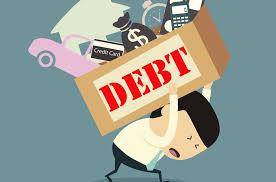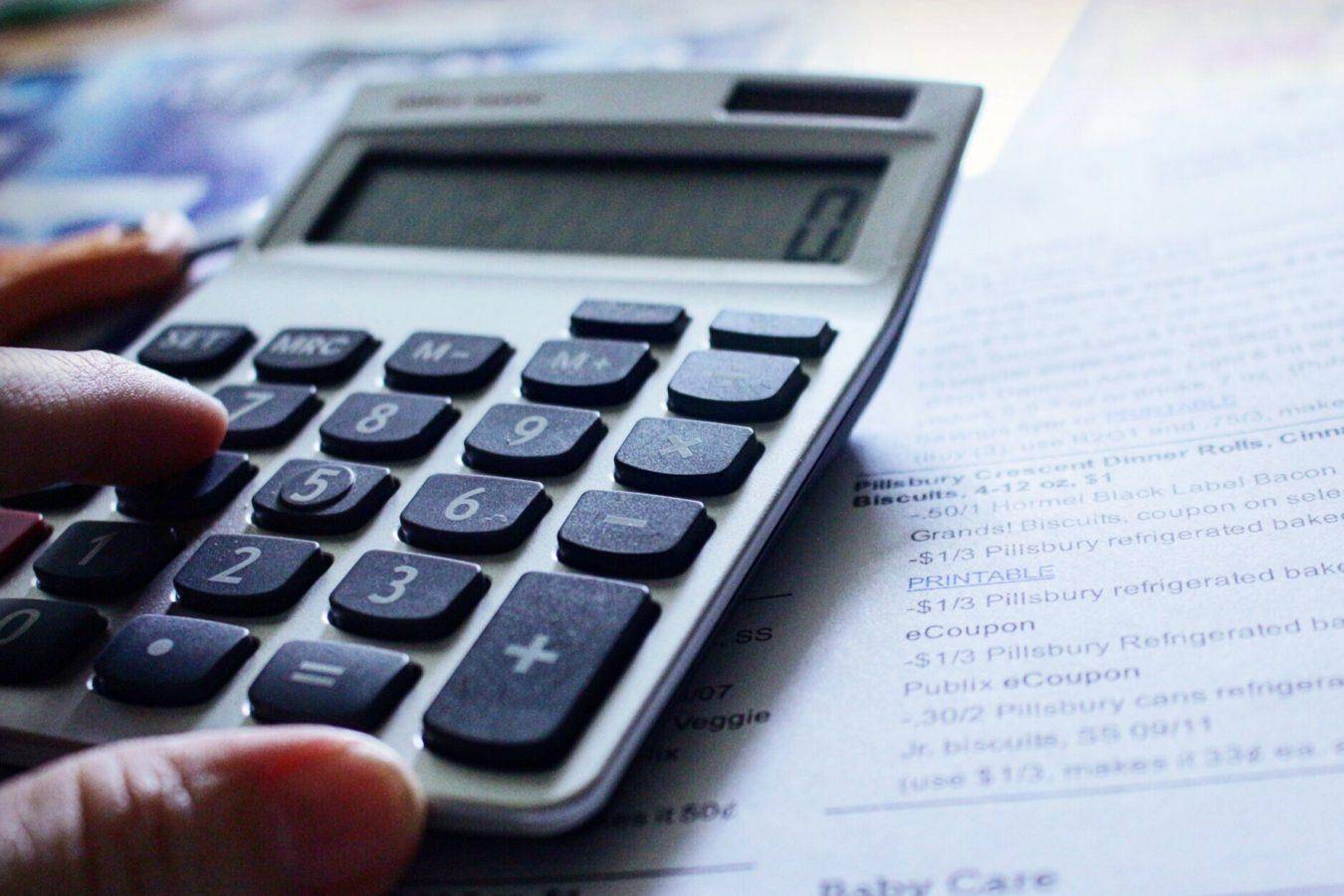Creating a budget that is realistic for your current situation can be a huge struggle. Maybe you have written a budget down but can’t use it because the numbers are unrealistic.
Do you have a lot of debt you just can’t seem to pay down no matter how hard you try?
Or maybe you were shown one budgeting method that doesn’t fit your financial story.
These issues are common reasons why American’s do not budget at all.
This is also why; I failed to budget for 10 years during my 20’s. The result was my debt and spending spiraled completely out of control: $85,000 dollars out of control.
In this writing, I will show you a way to create a budget that is simple and easily applied.
There are many budgets out there but this one is the perfect starting point if you’ve never created a budget or haven’t successfully used one.
According to a 2019 Bankrate survey, 21% of American’s are not saving money regularly because they are not budgeting. It is not due to their debt.
What do you have left to lose?
“Never let yesterday use up today.”
– Richard Nelson
In other words, forget about what happened yesterday, last month, or last year. Today is the day to start fresh.

What Should a Basic Budget Include?
For your first basic budget, only focus on 3 main categories. I refer to these categories as Needs, Debts, and Extras.
For this section, you will need at least 3 sheets of blank paper, your bank statements, and credit card statements from last month. Label one of your blank sheets Needs, one for Debts, and the last for Extras.
You are going to classify all of your expenses under one of these 3 categories.
The following chart shows examples of what to list under each category. These are not comprehensive lists but include enough examples to give you an idea of where to start.
Needs Category
The “needs” category is for the items you need in order to survive physically. I include car loans in this section because in most areas this is how you get to work.
Use your bank statements to start creating your list for each category shown above. List the bill name, the next due date, and the next payment amount for each item you list.
Debts Category
In your debts section, also include how much you own on the total debt.
I know there are expenses that have changing dollar amounts from month to month (utilities, food, etc). However, to keep things simple I want you to list what you paid last month plus $30.
This should give you a small buffer in your budget to make sure you can cover those expenses.
Extras Category
Finally, look at how much money you earned the previous month. Write down the total amount of each paycheck at the top of your “needs” page.
You will need this number for the next section.
If you need help locating all of your expenses download the “Locate/Gather Your Debt Checklist” below. This worksheet is part of the Budget and Debt Payoff Planner located in the Budget Planners Shop.
DOWNLOAD THE “LOCATE/GATHER YOUR DEBT CHECKLIST” HERE.
More Articles You May Be Interested In:
How to Save Money on a Tight Budget
Learn to Break a Bad Habit in Your Finances
How to Create a Grocery Budget
5 Types of Budgets For Beginners
4 Steps to Create a Budget for Beginners
Once you have all of your expenses organized, the following steps will be a breeze.
Step 1: What is your financial goal?
This is where you find your “why.” It can be tough to get into a new habit.
Why are you reading this blog post right now?
What do you want to change in your financial life?
The answer is your financial goal. For now, only choose one goal. If you are having trouble deciding on one goal, then here are some examples:
- Pay off debt
- Pay all of your bills on time
- Catch up on past due bills
- Start saving money each month
- Gain overall control of where your money is going
Step 2: Start assigning your needs and debts to a paycheck.
Let us exclude your extra’s list to focus on the core of your expenses; needs and debts.
Look at a calendar to see when your paydays are for the next month. Then review the due dates of each item listed on your “needs” and “debt” lists.
Write down which pay date will cover each of the items you have listed.
An example, I am paid biweekly at my day job, my next payday as of this writing is 02/04/22. I will assign all of the expenses I have due from 02/04/22 to 02/17/22 to that paycheck.
Step 3: Total how much you are paying out of each paycheck.
In this step, you are comparing how much you owe to how much you earn. Add together the amounts you owe from your first paycheck of the month and write down the total.
Do the same thing for the rest of your paychecks for that month.
Now, compare the expense totals to how much you expect that paycheck to be. Is there any money left over?
If so, write down how much is left of each paycheck.
Step 4: Decide which extra’s you can afford to keep.
Now is the time to decide which items to keep from your extras list and which ones to remove, temporarily, from your budget.
I think this is the hardest step to get through. None of us likes to lose anything fun in our lives.
This was the hardest step for me when I was trying to budget again. I had become used to getting $50 hairstyles, 90-minute monthly massages ($125/month), and my legs waxed ($125/month).
Keep your goal in mind as you work through this section. What you are sacrificing now is only temporary.
No one says you have to do without it forever. Just for the time being.
The best piece of advice I can give you is to keep at least 1 self-care item in your budget. Your health is everything!
I kept my monthly massage and decreased the time from 90 minutes to 60 minutes. The other two I removed.

Additional Areas to Trim Other Than Your Extras
Like you, restricting the fun out of my spending keeps me from staying on budget. I will throw in the towel. Therefore, here are a few ideas to consider.
According to the 2020 consumer expenditure report, American’s spend on average:
- $346.50/month on utilities
- $130.67/month on fuel and motor oil
- $289.25/month on other vehicle expenses
- $119.50/month on clothes
- $609.67/month on groceries at home
- $197.92/month on eating out
Check out the pie graph below to see how much that costs per year.
Look at your current budget draft. Compare what you spend in each category to these numbers.
Do you spend more in some of the areas? See if you can try to decrease spending on these types of needs.
As a trade-off, you keep more of your extras.
Data above provided by the U.S. Bureau of Labor Statistics
For my new budget in 2017, I only ate out once per month only spending $25.00. I also started meal planning and only bought ingredients for those meals from the grocery store.
Then I would fill in the rest of my list with the staples; milk, eggs, flour, orange juice, my favorite snacks, etc. My food bill went from $300 with spoilage to $150 per month without spoilage.
How to Effectively Use a Budget?
First, I want you to let go of the myths of budgeting. A budget is not there to restrict your spending for the rest of your life.
It is not a plan to require you to save every dollar you earn. Finally, it is not set in stone.
Your budget is a guideline to help you choose which direction you want your money to go in every month. I like to think of it as my treasure map.
I can look at my budget from last month to see where my money went.
For the current month, I can use it to decide where I want my money to go this time. This guideline, aka treasure map, is the best way to track your spending before your money even leaves the bank.
You will know how much money you have left to spend freely without missing any payments.
It is also very satisfying when you start seeing debts drop off your budget and the payments becoming disposable income.
After you follow the steps above, you will have your basic budget sitting in front of you. I want you to find the smallest debt amount you owe.
Pay more than the minimum payment to pay it off more aggressively. How much more depends on what you are comfortable spending consistently each month.
Pay the minimum payments on the rest of your debts. Once this debt is paid, move on to the next smallest debt.
If you are finding out you owe more than you earn. Find the largest debts you owe, especially if they have high interest.
Then reach out to the creditor to request a financial hardship program. This is a negotiation to get your monthly payments lowered. Creditors do not advertise this option but it is there.
More Articles You May Be Interested In:
How to Save Money on a Tight Budget
Learn to Break a Bad Habit in Your Finances
How to Create a Grocery Budget
5 Types of Budgets For Beginners
Concluding Thoughts
If you try this budgeting method and discover it still is not a good fit for you, do not worry.
Over the next 6 weeks’ I will teach you 5 different budgeting methods you can try. Each method will show you, in detail, how they work.
How to create them and the expected skills the methods will require. I know your schedule is busy.
To help save you some time, next weeks’ post will be a summary of the 5 budgeting methods to come. This way you will know which week you want to tune in for instructions that are more detailed.
Have a great week!
References
https://www.bls.gov/opub/reports/consumer-expenditures/2020/home.htm
https://www.bankrate.com/banking/savings/financial-security-march-2019/
Subscribe and you'll receive our weekly posts right in your inbox. You'll also be one of the first to be notified when our free budget course opens. Hope to see you there!





